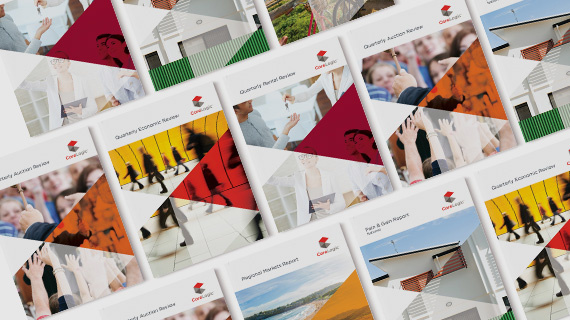PHOTO: First home buyers. FILE
Despite continued affordability pressures, tight lending rules and higher mortgage rates, first home buyers (FHBs) in Aotearoa New Zealand have maintained their record high market share over the past two quarters.
CoreLogic’s latest First Home Buyer report, released today, shows the number of purchases made by FHBs in Q1 2023 was 3,260; the lowest for that quarter of the year since 2011. However, FHB market share held around 25%, on par with previous record highs and well above the long-term average of 21-22%.
CoreLogic NZ Chief Property Economist Kelvin Davidson said the current market conditions were impacting all buyer groups, and FHBs have ‘held on’ relatively well by making the most of weaker conditions.
“There are many potential reasons for the relative strength of FHBs, but key ones are likely to include using KiwiSaver for all or part of their deposit, a willingness to compromise on the type and/or location of a property, and making use of the low deposit lending quotas at the banks,” Mr Davidson said.
“The wider downturn in values and relatively high stock of listings on the market has also helped finance-approved FHBs, and brought a wider range of properties back onto their radar.”
The national trends are being reflected across the main centres, with all six areas reflecting higher than average market share for FHBs.
Hamilton has been the strongest, with a FHB market share of 33% in Q1 2023, about nine percentage points higher than its average. FHBs’ share has also topped 30% lately in Wellington (versus average of 29%), while Christchurch, Auckland, and Dunedin have also been running above normal. The FHB market share in Tauranga has been quite a bit lower at 17% in Q1 2023, but even that is slightly above what’s normal for that market (average of 16%).
Property type
Standalone houses accounted for 75% of FHB purchases nationally in the most recent quarter, up from 71% a year ago and well above the share of this property type across all buyers (72%). On the flipside, the share of apartments amongst all FHB purchases has dropped from 21% a year ago to 18% now.
Across the main centres, standalone houses accounted for the highest share of FHB purchases in Hamilton, at 92% in Q1 2023 (up from the long-term average of 86%). Dunedin and Tauranga also have figures of at least 90% for that property type.
In Wellington and Christchurch the proportions are quite a bit lower (72-73%), and are a bit below the norms for those markets.
Mr Davidson said it would appear that FHBs are looking more closely at smaller dwellings such as townhouses in Wellington and Christchurch than they would normally do.
“This data, at least partly, reflects that this type of property has simply become more readily available of late, due to construction. Smaller dwellings are currently also relatively more popular with FHBs than normal in Auckland.”
FHB median price
Despite purchasing larger or more freestanding homes, the median price paid by FHBs fell from $730,000 over 2022 to $680,000 in Q1 2023; significantly higher than the lower quartile (bottom 25%) across all buyers, of $555,000.
“Given the higher proportion of houses within all FHB purchases recently, the recent drop in the price being paid isn’t due to them simply buying smaller or cheaper properties,” Mr Davidson said.
Each of the main centres has also seen the median price being paid by FHBs fall in recent months and quarters, alongside the wider decline in property values.
“The median FHB price in the main centres is lower than the figure for all buyers, but higher than the lower quartile for all buyers, which reinforces the fact that the ‘typical’ FHB doesn’t always enter at the bottom of the market and work their way up – many actually enter the market well above the ‘bottom rung’ of the ladder,” he said.
Auckland had the highest FHB median in Q1 2023, at $885,000 (versus $1m a year ago), with Wellington, Tauranga, and Hamilton all ranging from $775,000 to $730,000, and Christchurch and Dunedin both sub-$600,000 ($580,000 and $531,000 respectively).
The main urban areas
The relative strength for FHBs’ market share remained in place in Q1 2023 across the next 12 key centres around New Zealand. In Invercargill, FHB market share grew by 12 percentage points to 34% from its long-term average, while Napier, Hastings, and Rotorua also saw solid performances over the quarter. Relative strength was also seen in Whangarei, Nelson, Gisborne, Whanganui, Palmerston North, and Kapiti Coast.
By contrast, New Plymouth’s FHB market share in Q1 2023 was only in line with its long-term average (21%), while FHBs continued to struggle in the expensive Queenstown market with a 13% share, down from the long-term average of 15%.
Houses are the dominant type of property amongst the existing housing stock in the urban areas, and therefore also account for a high share of FHB purchases.
Standalone houses represented 96% of FHB purchases in Rotorua, while Invercargill, Palmerston North, New Plymouth, and Gisborne also topped 90%. Figures between 80% and 90% were seen in Kapiti Coast, Whanganui, Hastings, and Napier, while Whangarei and Nelson were around the 75% mark. Reflecting a wider range of property types and also affordability pressures, Queenstown’s figure for houses as a share of FHB purchases was 58%.
In terms of median prices paid by FHBs in Q1 2023, the highest amongst the main urban areas was $875,000 in Queenstown, with Kapiti Coast back in second position at $668,500. FHBs also paid median prices >$600,000 in Whangarei, Nelson, Napier, New Plymouth, and Hastings. At the other end of the spectrum, FHBs got cheaper properties in Whanganui (median price paid of $425,000) and Invercargill ($400,000).
FHB outlook
“It’s been a solid three to six months lately for FHBs, as they’ve enjoyed plenty of choice amongst the existing stock of properties listed for sale, falling prices, and reduced competition from other buyer groups such as mortgaged investors.
“Looking ahead, even if the downturn in prices does end in the second half of this year, we doubt that the market is going to boom again straightaway – especially if caps on debt to income ratios are imposed in March or April next year, which now looks almost certain. In other words, FHBs should continue to see relatively favourable conditions for a while yet, albeit mortgage rates seem unlikely to suddenly fall sharply anytime soon,” he said.
To download the report visit corelogic.co.nz.
MOST POPULAR
- THE ANCIENT STONE CITY: Proof of NZ civilisation before Kupe
- New Zealand real estate agents abandon sinking housing market
- IRD ordered to pay $75,000 for breaching real estate agent’s rights
- Real Estate brands battle it out over salesperson
- Claims about Jacinda Ardern’s wealth
- We sold our NZ home and bought in Adelaide for less than NZ$537,000
- Duncan Garner is divorced, lives with his mother and recently had to sleep in his car
- Abandoned land for sale
- A HUTT boy set to become NZ’s next Prime Minister
- How rich is the UK royal family? | WATCH


















